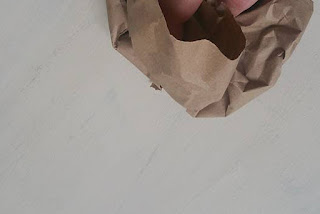I have several completed pieces that I would like to share with you in a collection of blogs. Keep in mind that these pieces are already complete and most have moved on to their new homes.
The first piece that I would like to share was just recently completed on 1/13/15. This piece caught my eye the moment I saw it! Such a unique item with so much potential. Sometimes I really wish I could talk to furniture. The history behind this piece has to be amazing.
For those of you who don't know, a dry sink was a very common piece of furniture prior to the invention of plumbing. The recessed top often held a basin and pitcher. A dry sink was usually kept in the kitchen, bedroom or sometimes on the porch. I did a little research after buying this piece and dated it back to the 40's or 50's.
When I picked the piece up it was still in solid condition. I took it home and got right to work on it. With every piece I always imagine finding some kind of hidden treasure. As I begin to remove the drawers something caught my eye... an envelope was taped to the backside of the drawer! I couldn't get the drawer out fast enough to find what fortune was waiting for me in the envelope. To my surprise it was -gasp- EMPTY! Oh well, maybe next time.
After removing the drawers I began removing the hardware. All of the knobs, hinges and screws are placed into a sealed container so I do not lose them. After removing the hardware I then wiped down the entire piece with a damp rag to remove all dust and dirt.
Before painting I wanted to revive the wood that I would not be painting. I like to do this before painting to help protect these areas from spills. It also makes it easier to clean up any paint that may get on the wood. I've been loving the "As Seen on TV" product called Amish Wood Milk. This spray on, wipe off product easily removes dirt and dust build up while restoring the natural look of the wood. I was blown away by how flawless the wood was under the layers of dust. Nearly no cosmetic damage at all to the parts that I intended on leaving unpainted. There were a few light scratches which were easily covered with a bit of the antique wax that I will be using a bit later in the process.
Finally all prep is complete. Now comes the fun part... PAINTING!
I mixed my own chalk paint (recipe
here). The color of choice for this piece was Silent Night by Olympic. This shade was the first thing that came to mind when I saw the dry sink. I mixed the paint and applied three layers. Each layer was applied after the previous layer had fully dried.

The final drying is important before applying any wax or finish to any piece. I like to let the paint air dry over night before proceeding with the finishing steps just to ensure that it has had enough time to dry. For this project I used a favorite wax of mine, Martha Stewart's Vintage Decor Antique wax. It was applied with a stencil brush to gently distress the corners/edges. To get the distressed effect, stipple on a bit of dark wax then wipe excess off with a rag. Repeating this process in the same area will darken the effect. If you apply too much wax in an area simply wipe it off with a wet rag before it has a chance to dry. Like any layer, this too must dry before applying the final coat of wax. My final wax of choice for this piece was the Minwax Paste Finishing Wax. This wax is applied with a rag and then gently buffed out.
Last step was to install the new knobs and replace the doors. I like to leave the doors off until the last step to ensure that they are fully waxed, which tends to be difficult to do it they are reattached to the furniture. The knobs used were purchased at Hobby Lobby but the screws were about 2 inches too long for the doors and drawers. Cutting screws is a fairly easy task if you have the right tool. I prefer to use (yup you guessed it) a wire stripper! Okay, maybe you never would have guessed it but trust me when I tell you that this tool will be your knob cutting BFF. When cutting a screw you must make sure not to ruin the thread or it won't feed into the nut. This tool will easily cut your screws without damaging the thread. The round holes in the center will be used to cut your screw. Most drawer knobs are a 10-32. Simply screw the knob into the 10-32 hole making sure the stripper is open as shown and that the holes are lined up. Determine how much you want to cut off and screw the knob to this length. Goggles would probably be a good idea at this point as the end of the screw may fly off and you'd hate to have it hit you in the eye. Firmly grasp the handles and squeeze. The end you've cut off will fall to the counter and the knob can then be unscrewed from the pliers. Easy peasy!


I repeat the process on the other 5 knobs, install each onto the drawers/doors, attach the cabinet doors and the project is complete!
This is the part where I stand back and just take it all in. Isn't she beautiful?!
This reclaimed piece found its new home the day after I completed it. I hope she will love it as much as I do!




















































